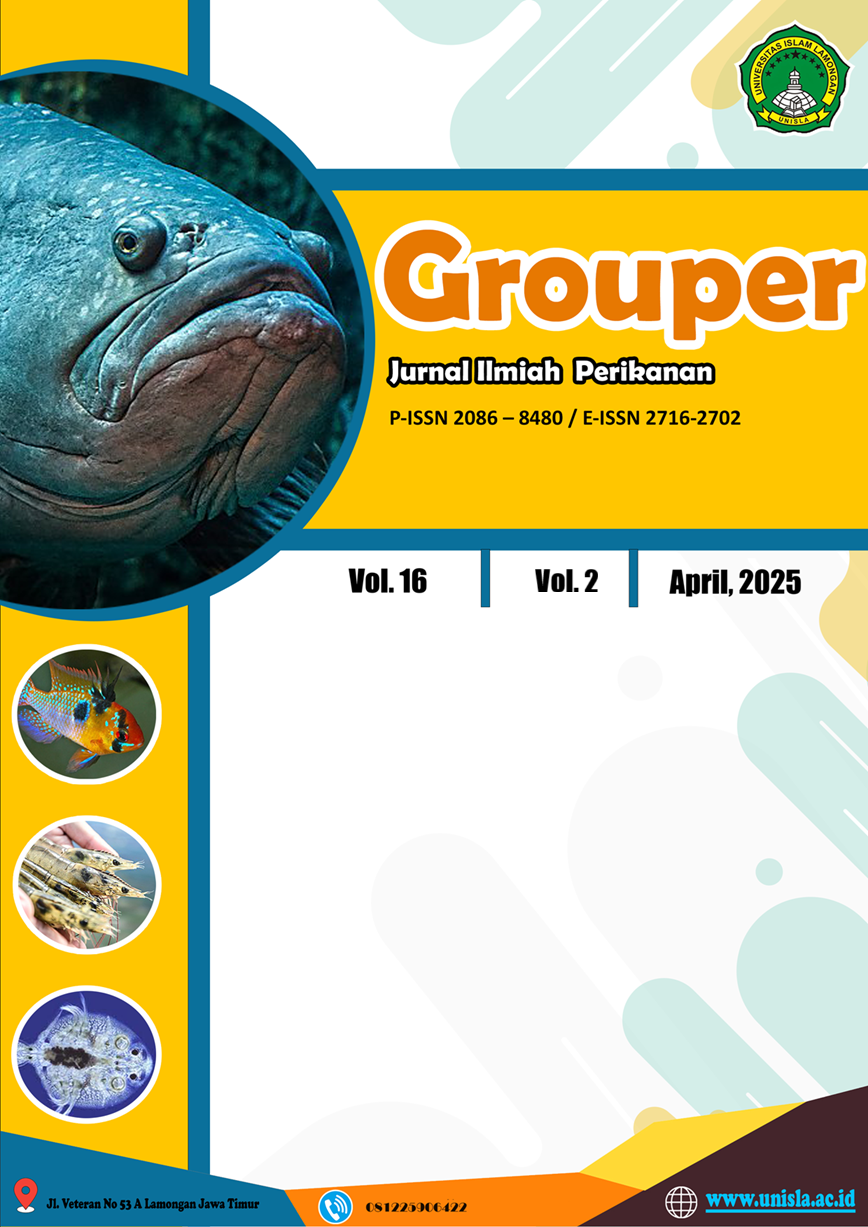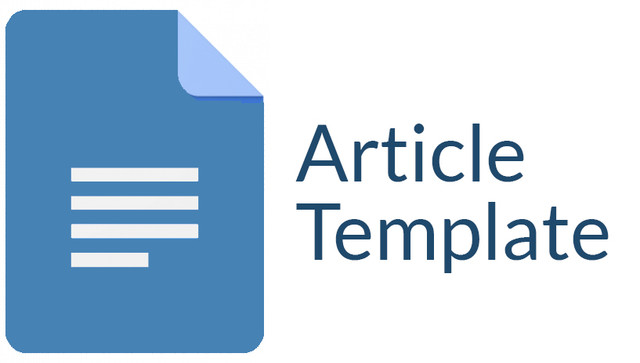Prioritization of Development Strategies Based on the Existing Business Model Canvas at Beras Basah Island
DOI:
https://doi.org/10.30736/grouper.v16i2.321Keywords:
Beras Basah island, Business Model Canvas (BMC), Strategic Priority, bontangAbstract
This study aims to determine the mapping of existing business strategies and to develop new business strategies into a business model canvas. The method used is descriptive qualitative. Data collection was carried out through observation, documentation and interviews. The collected data were analyzed using SWOT analysis and the results were described in nine elements of the Business Model Canvas. The results of the study indicate that the business strategy obtained from the mapping of the Business Model Canvas is quite good, because each element supports each other to increase income. Furthermore, several strategies need to be carried out to increase income and prioritize the concept of sustainable ecotourism such as publication and socialization of policies; determination of a management model based on the carrying capacity of the Area; integration between tourist destinations to create a tour package; collecting feedback to improve services; expanding market segmentation to foreign tourists; determining promotion costs, research and development; and optimizing opportunities through increasing MSMEs and the creative economy
Downloads
References
Adharani, Y., Zamil, Y. S., Astriani, N., & Afifah, S. S. (2020). Penerapan Konsep Ekowisata Di Kecamatan Cihurip Kabupaten Garut Dalam Rangka Perlindungan Dan Pengelolaan Lingkungan. Prosiding Penelitian Dan Pengabdian Kepada Masyarakat, 7(1), 179. https://doi.org/10.24198/jppm.v7i1.25235
Angela, V. F. (2023). Strategi Pengembangan Ekowisata dalam Mendukung Konservasi Alam Danau Tahai. JIM: Jurnal Ilmiah Mahasiswa Pendidikan Sejarah, 8(3), 984–993. http://jim.unsyiah.ac.id/sejarah/mm
Arianto, M. F. (2020). Potensi Wilayah Pesisir di Negara Indonesia. Jurnal Geografi, 20(20), 1–7.
Asmin, F. (2018). Ekowisata dan Pembangunan Berkelanjutan (Dimulai dari Konsep Sederhana). Padang : Asmin Publish, February, 1–69. https://books.google.co.id/books?id=JKzXXwAACAAJ
Bagindo, M. P., Sanim, B., & Saptono, T. (2016). Model Bisnis Ekowisata di Taman Nasional Laut Bunaken dengan Pendekatan Business Model Canvas. MANAJEMEN IKM: Jurnal Manajemen Pengembangan Industri Kecil Menengah, 11(1), 80–88. https://doi.org/10.29244/mikm.11.1.80-88
Boukherouk, M., & Ed-Dali, R. (2020). Tourism, Local Communities and Environmental Governance: Analysis of the Souss Massa Nature Park Governance in Morocco. Athens Journal of Tourism, 6(4), 245-276 Tourism,. https://doi.org/10.30958/ajt.7-1-3
David, M. E., David, F. R., & David, F. R. (2017). The quantitative strategic planning matrix: a new marketing tool. Ournal of Strategic Marketing, 25(4). https://doi.org/https://doi.org/10.1080/0965254X.2016.1148763
Dewi, L., Pradini, G., Sartritama, m A., & Putra, R. A. (2023). PENGELOLAAN EKOWISATA DAN PENTINGNYA PENERAPAN CHSE Oleh. J-Abdi Jurnal Pengabdian Kepada Masyarakat, 3(3), 587–592.
Endratno, H., Azizah, S. N., & Rusman, A. (2023). PENGEMBANGAN MODEL BISNIS CANVAS DESA WISATA KARANG SALAM, KEC. BATURRADEN, KAB. BANYUMAS. Derivatif : Jurnal Manajemen, 17(2), 216–226.
Fan, D. X. ., Buhalis, D., & Lin, B. (2019). A Tourist Typology of Online and Face-to Face Social Contact: Destination Immersion and Tourism Encapsulation/Decapsulation. Annals of Tourism Research, 78. https://doi.org/https://doi.org/10.1016/j.annals.2019.102757
Faradilla, A. (2022). Pengembangan Ekowisata Bahari di Kepulauan Riau. Jurnal Sains, Sosial Dan Humaniora (Jssh), 2(2), 12–15. https://doi.org/10.52046/jssh.v2i2.1322
Fatimah, F. N. D. (2020). Teknik Analisis SWOT: Pedoman Menyusun Strategi yang Efektif dan Efisien serta Cara Mengelola Kekuatan dan Ancaman. Penerbit Anak Hebat Indonesia.
Koroy, K., Yulianda, F., & Butet, N. A. (2017). Pengembangan Ekowisata Bahari Berbasis Sumberdaya Pulau-Pulau Kecil Di Pulau Sayafi Dan Liwo, Kabupaten Halmahera Tengah. Jurnal Teknologi Perikanan Dan Kelautan, 8(1), 1–17. https://doi.org/10.24319/jtpk.8.1-17
Lonn, P., Mizoue, N., Ota, T., Kajisa, T., & Yoshida, S. (2018). Evaluating the Contribution of Community-based Ecotourism (CBET) toHousehold Income and Livelihood Changes: A Case Study of the Chambok CBET Program in Cambodia. Ecological Economics, 151, 62-69.
Ma’ruf, A. (2022). Analisis Strategi: Panduan Praktis SWOT, GE-McKinsey, Space, FFA, QSPM, AHP Menggunakan Microsoft Excel. Penerbit ANDI.
Maak, C. S., Muga, M. P. L., & Kiak, N. T. (2022). Strategi Pengembangan Ekowisata terhadap Ekonomi Lokal pada Desa Wisata Fatumnasi. OECONOMICUS Journal of Economics, 6(2), 102–115. https://doi.org/10.15642/oje.2022.6.2.102-115
Mallick, S. K., Rudra, S., & Samanta, R. (2020). Sustainable ecotourism development using SWOT and QSPM approach: A study on Rameswaram, Tamil Nadu. International Journal of Geoheritage and Parks, 8(3), 185–193. https://doi.org/10.1016/j.ijgeop.2020.06.001
Oliveira, T., Araujo, B., & Tam, carlos. (2020). Why do people share their travel experiences on social media? Tourism Management, 78. https://doi.org/https://doi.org/10.1016/j.tourman.2019.104041
Osterwalder, A., & Pigneur, Y. (2010). Business Model Generation (Tim Clark (ed.)). Wiley.
Pratiwi, N., & Herwin, H. (2022). Konsep Ekowisata Pada Desain Kawasan Pantai Minanga. JAMBURA Journal of Architecture, 4(1), 25–29. https://doi.org/10.37905/jjoa.v4i1.13270
RI, P. P. (2024). Peraturan Presiden (Perpres) Nomor 32 Tahun 2024 Tentang Tanggung Jawab Perusahaan Platform Digital untuk Mendukung Jurnalisme Berkualitas. https://peraturan.bpk.go.id/Details/278037/perpres-no-32-tahun-2024
Saad, M., Muntalim, M., Anam, M. K., & Sativa, D. O. (2020). Strategi pemasaran usaha pembekuan ikan laut dengan metode matriks BCG dan SWOT di CV. Jioen fishery di Desa Wedung Kecamatan Brondong Kabupaten Lamongan. Jurnal Grouper, 11(2), 18.
Salim, M. A., & Siswanto, A. B. (2019). Analisis SWOT dengan Metode Kuesioner. CV. Pilar Nusantara.
Setiawan, J., Budiastuti, M. S., Gravitiani, E., & Setyono, P. (2021). Business model canvas (BMC) approach for tourism management strategy of the top selfie kragilan, Mt. Merbabu National Park. Geojournal of Tourism and Geosites , 35(2), 297–303. https://doi.org/10.30892/GTG.35205-651
Shi, F., Weaver, D., Zhao, Y., Huang, M. F., Tang, C., & Liu, Y. (2019). Toward an Ecological Civilization: Mass comprehensive Ecotourism Indications Among Domestic Visitors to a Chinese Wetland Protected Area. Tourism Management, 70, 59–68. https://doi.org/https://doi.org/10.1016/j.tourman.2018.07.011
Sugiyono. (2019). Metodelogi Penelitian Kuantitatif dan Kualitatif Dan R&D. Alfabeta.
Toro-Jarrín, M. A., Ponce-Jaramillo, I. E., & Güemes-Castorena, D. (2016). Methodology for the of building process integration of Business Model Canvas and Technological Roadmap. Technological Forecasting and Social Change, 110(February), 213–225. https://doi.org/10.1016/j.techfore.2016.01.009
Usman, R. T., Baga, L. M., & Sarma, M. (2022). Developing Strategies for an Integrated Ecotourism Business: Study Case in Olele Village, Bone Bolango Regency, Gorontalo, Indonesia. Business Review and Case Studies, 3(3), 215–225. https://doi.org/10.17358/brcs.3.3.215
Wahyuni, S., Susilo, H., & Erwiantono, E. (2023). Priority Strategies for Sustainable Community-Based Ecotourism Management on Kaniungan Besar Island, Indonesia. Sodality: Jurnal Sosiologi Pedesaan, 10(3), 284–294. https://doi.org/10.22500/10202243996
Warnaningtyas, H. (2020). Desain Bisnis Model Canvas (BMC) Pada Usaha Batik Kota Madiun. Jurnal Ekomaks, 9(2), 52–65. https://ekomaks.unmermadiun.ac.id/index.php/ekomaks/article/view/62
Wisnuwardhani, D., & Mashoedi, S. F. (2012). Hubungan Interpersonal. Salemba Humanika.
Zulkarnaen, H. O., & Sutopo. (2013). Analisis Strategi Pemasaran Pada UKM Makanan Ringan (Studi Penelitian UKM Snack Barokah Di Solo). Semarang , Universitas Diponogoro, 2(3), 1–13.
Zulkarnain, A., Wahyuningtias, D., & Putranto, T. S. (2018). Analysis of IFE, EFE and QSPM matrix on business development strategy. IOP Conf. Series: Earth and Environmental Science 126, 8, 1–7. https://doi.org/10.1088/1755-1315
Downloads
Published
How to Cite
Issue
Section
License
Copyright (c) 2025 Nur Indah Sari, Heru Susilo, Erwiantono, Fitriyana, Juliani

This work is licensed under a Creative Commons Attribution-NonCommercial-ShareAlike 4.0 International License.







.jpg)
1.png)



